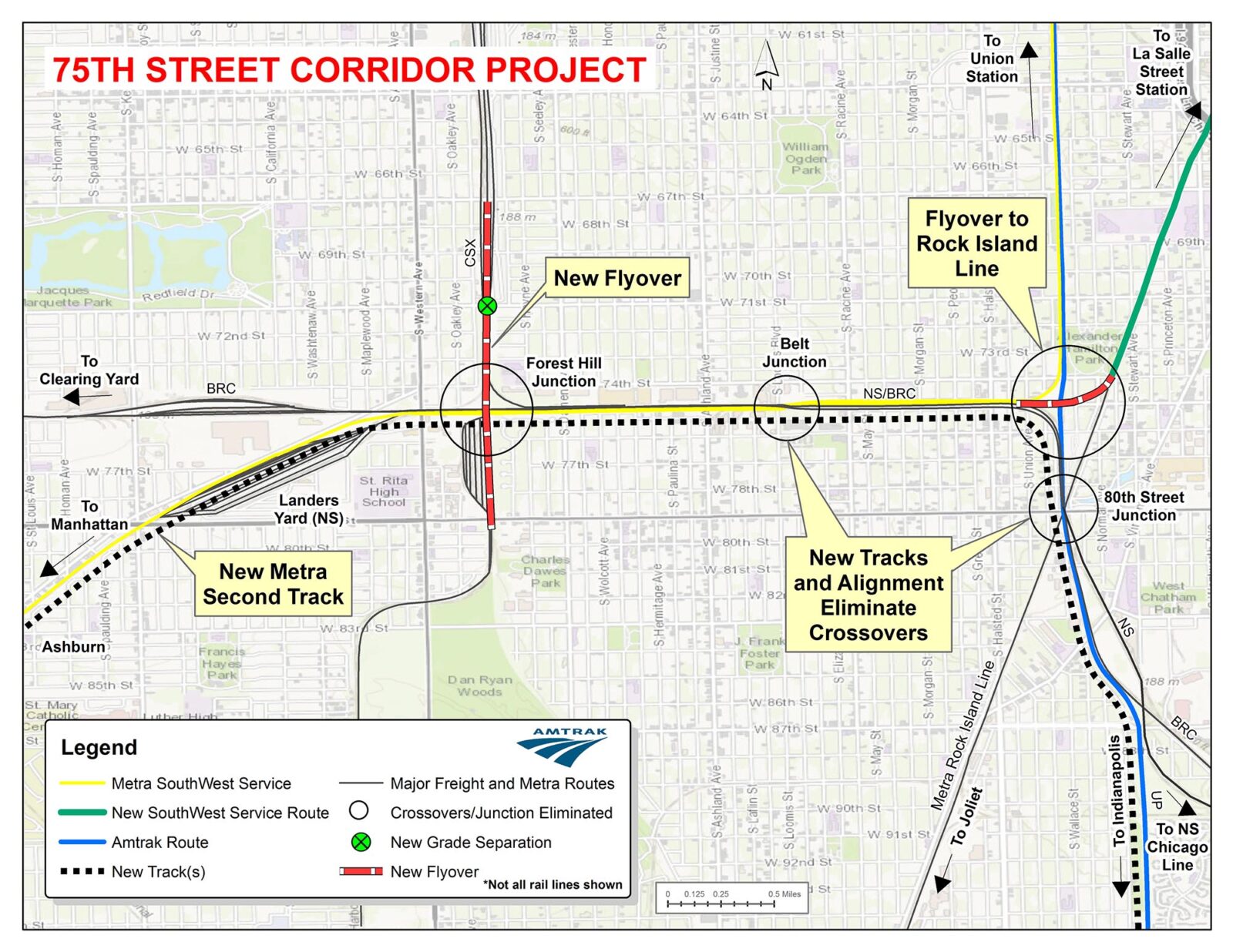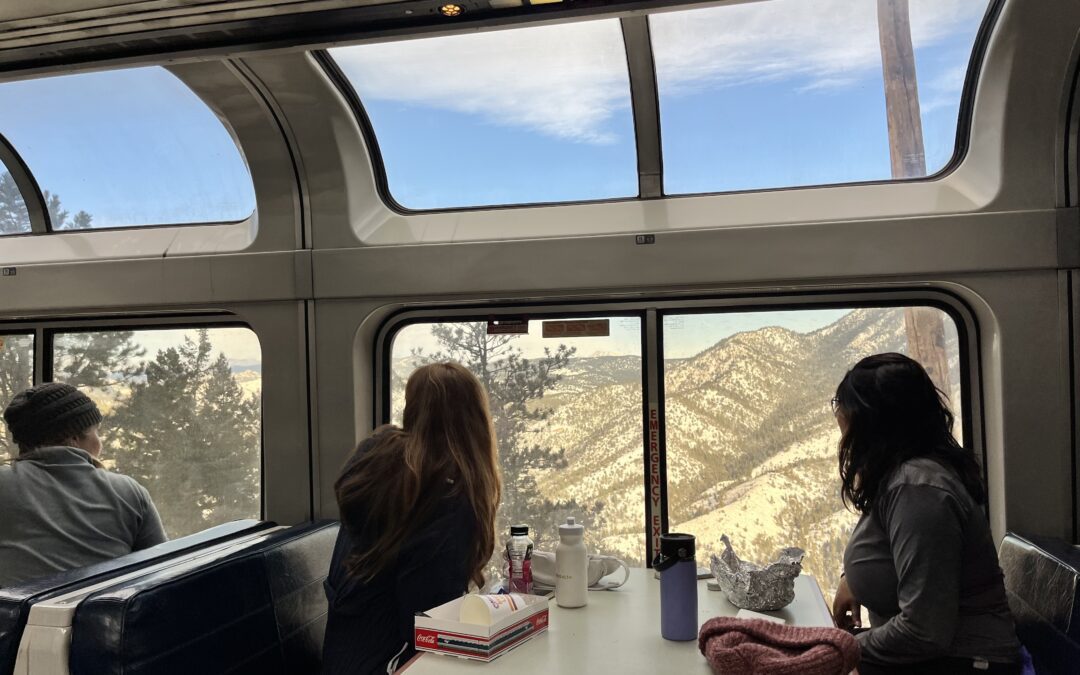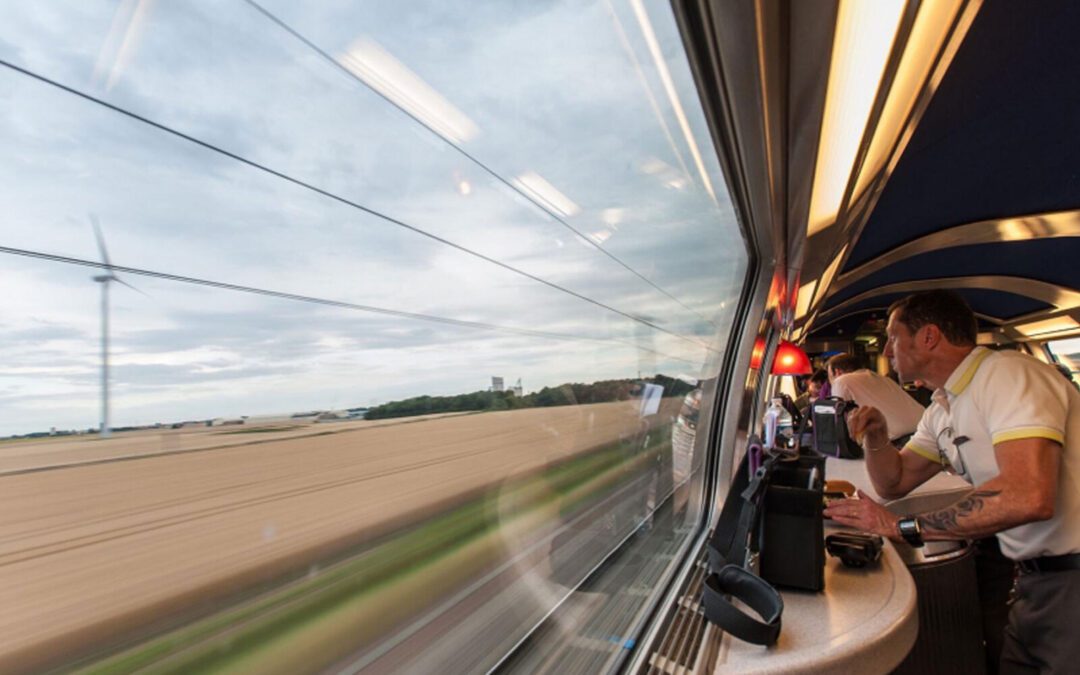Big Changes in Texas and New York This week, US Transportation Secretary Sean Duffy announced major shifts in direction for two important projects. As advocates for quality trains, we need to speak up for the changes we want to see. On Tuesday, Sec. Duffy announced...
This week, Illinois’ congressional delegation celebrated a $132 million federal grant for the massive 75th Street Corridor Improvement Project. The 75th Street corridor contains a number of individual projects that are among the most important in the CREATE program, a decade-long effort to unclog passenger and freight trains in the Chicago region.
This is great news for the entire Midwest. These improvements, all in one area of Chicago’s South Side, will improve the speed and reliability of passenger trains from as far away as the East Coast, and make it easier to add and improve trains from around the Midwest.
The $132 million federal grant will be matched by a number of local, state and private railroad grants to total $474 million, or about half of the $1 billion required to complete all of the 75th Street projects. This first phase will allow for construction of these individual CREATE projects:
- P-3, a flyover that takes the north-south CSX line over the east-west lines at Forest Hill junction and GS-19, which grade separates CSX from 71st Street. This will let north-south trains pass without interfering with east-west trains, including Metra’s Southwest Service. It will also keep 71st Street from being blocked by slow-moving freight trains.
- B-9 improves access to a nearby yard and increases its capacity so that freight trains don’t block the main line.
It will also allow design to begin on these important components:
- EW-2 removes Belt Junction, an absurd bottleneck where five east-west tracks narrow down to two as they cross each other. After the fix, all five tracks will be able to proceed straight through without conflict.
- P-2 adds a flyover to allow Metra Southwest Service trains to move through the area without conflict and then proceed to LaSalle Street Station, instead of Union Station. It also adds a second track to fill a short one-track bottleneck near Wrightwood Station.
As this video explains, only one train can move through the area at a time, while trains from all other directions wait and cause cascading backups. For instance, westbound Norfolk Southern freight trains must stop and wait on a main line miles away, clogging up tracks that Amtrak trains rely on.
These fixes will let trains on different lines flow freely through the area, removing miles of backups. Without trains waiting on Norfolk Southern’s main line along Lake Michigan, the 14 daily Amtrak trains to Michigan and the East Coast should see less delays. Amtrak’s Hoosier State and Cardinal trains pass through the east side of the 75th Street junction and should also be improved.
Finally, moving Metra Southwest Service trains to LaSalle Street station will free up space at Union Station, which will allow it to accept more trains from around the Midwest.
This is but one step in a long and ongoing battle to untangle Chicago’s railroads, but it’s a big one. Not only will it mean better reliability and improved frequency for existing Amtrak service, it will make it easier to add new service to destinations around the Midwest.
This week at Midwest High Speed Rail Association
Midwest High Speed Rail Association Executive Director Rick Harnish traveled to Washington, D.C to attend a briefing with Chairman Dan Richards and CEO Brian Kelly of the California High Speed Rail Authority regarding its 2018 business plan. He also presented at the International Transportation and Economic Development Conference regarding the need for a national network of fast trains.
A resolution introduced by Senator Clayborne (D – East St. Louis), SJR0074, passed the Illinois Senate and moved on to the House. The resolution urges Governor Bruce Rauner and the Illinois Dept. of Transportation (IDOT) to prepare an investment-grade ridership and business analysis of true, 220-mph high-speed rail in Illinois. The study would build on a past feasibility study conducted by IDOT and the University of Illinois.
Articles we enjoyed
Amtrak to replace, rebuild national network locomotive fleet
A $132 million federal grant to address a notorious rail snarl
Dedication ceremony slated for Joliet train station
The Latest from HSRA
Our Latest Blog Posts
Check out the latest news, updates, and high speed rail insights from our blog!





